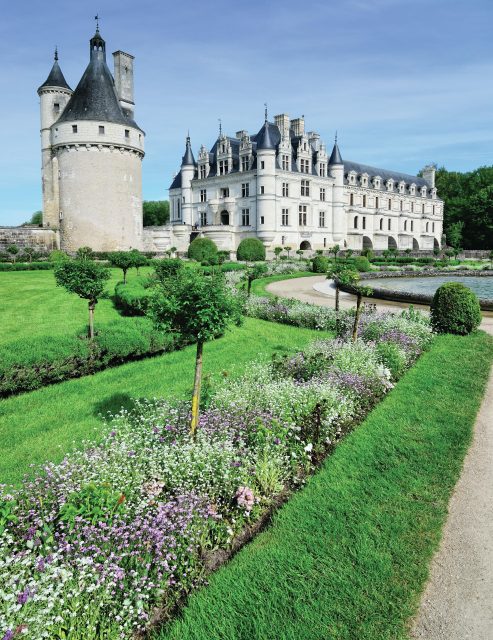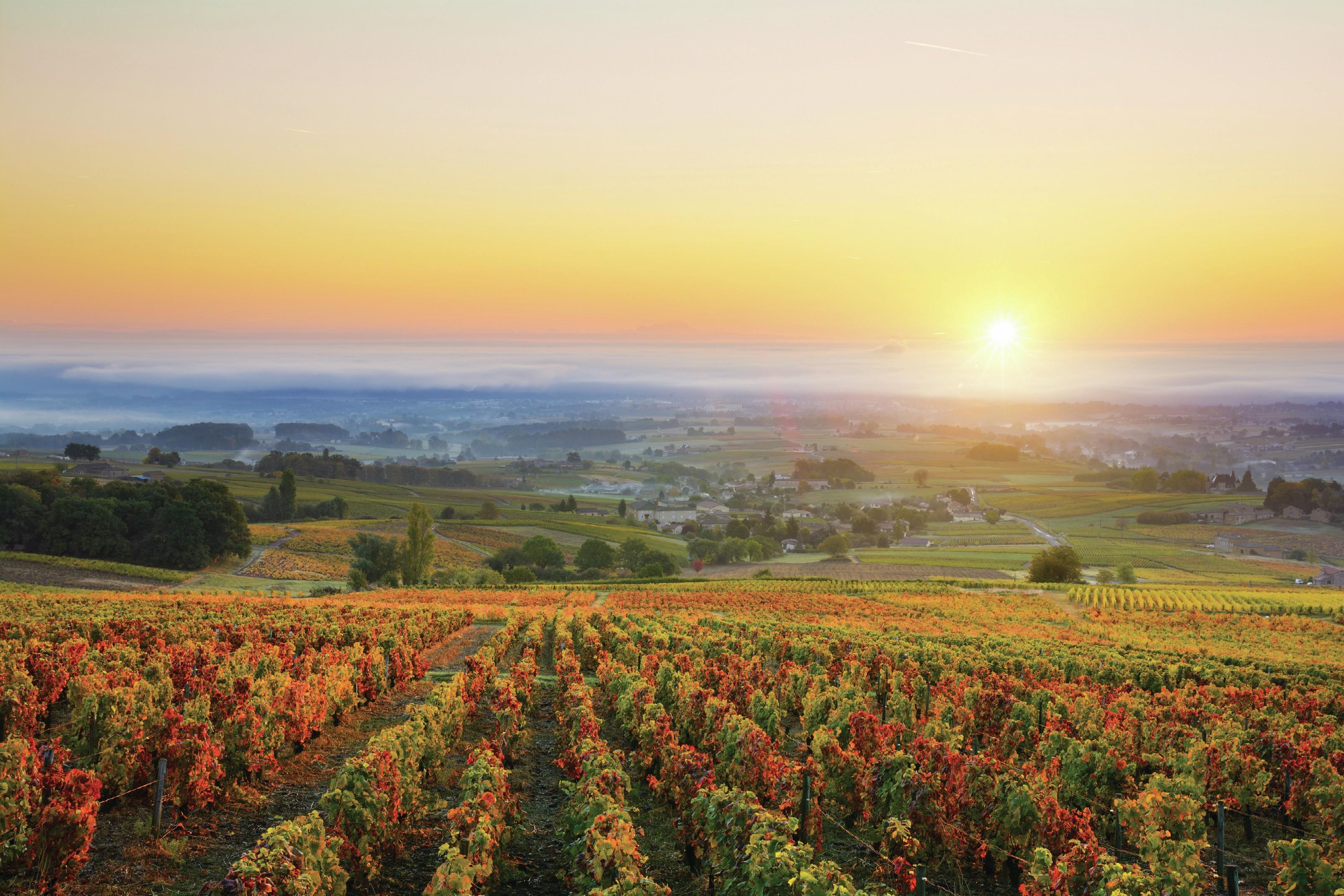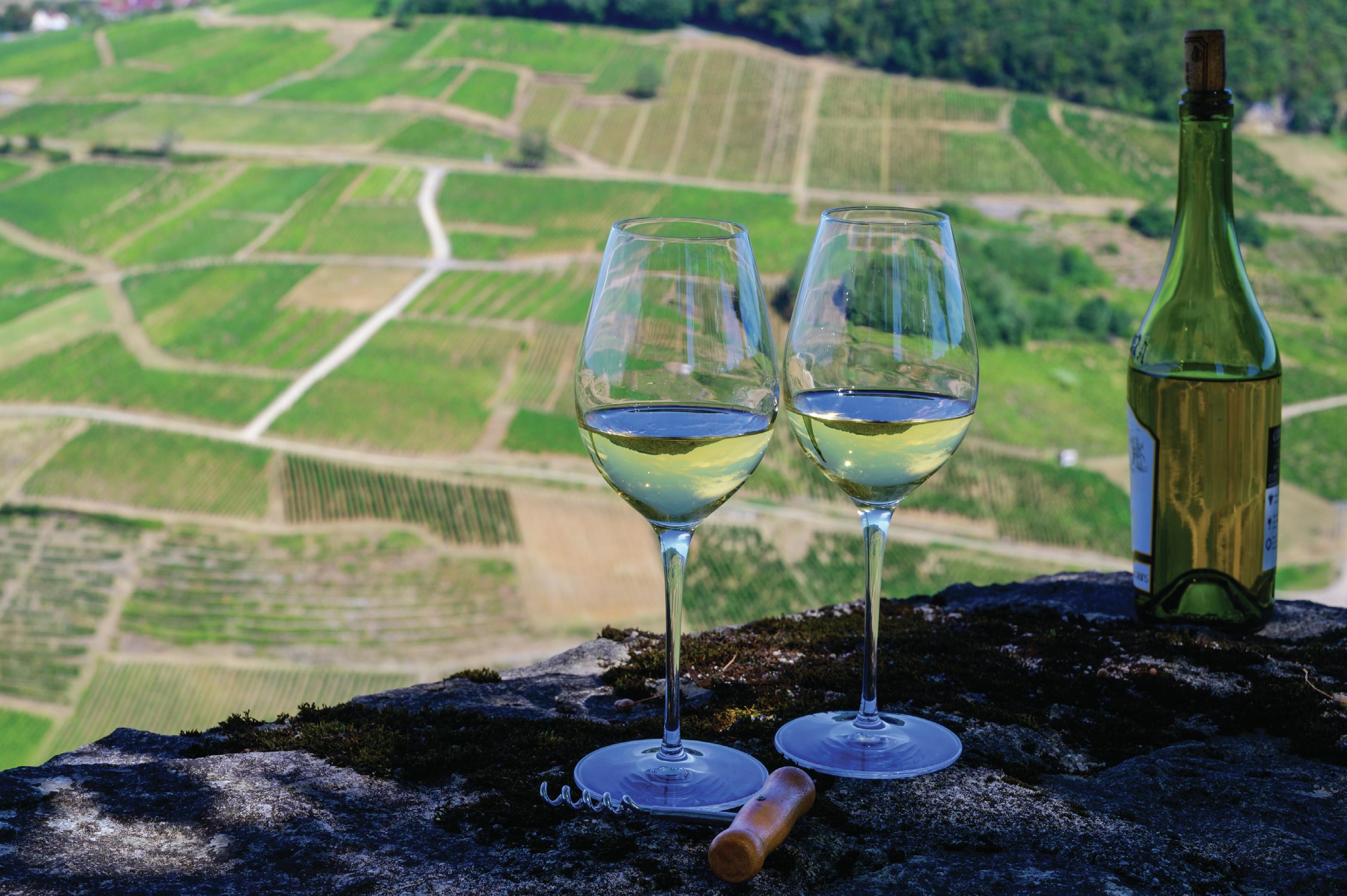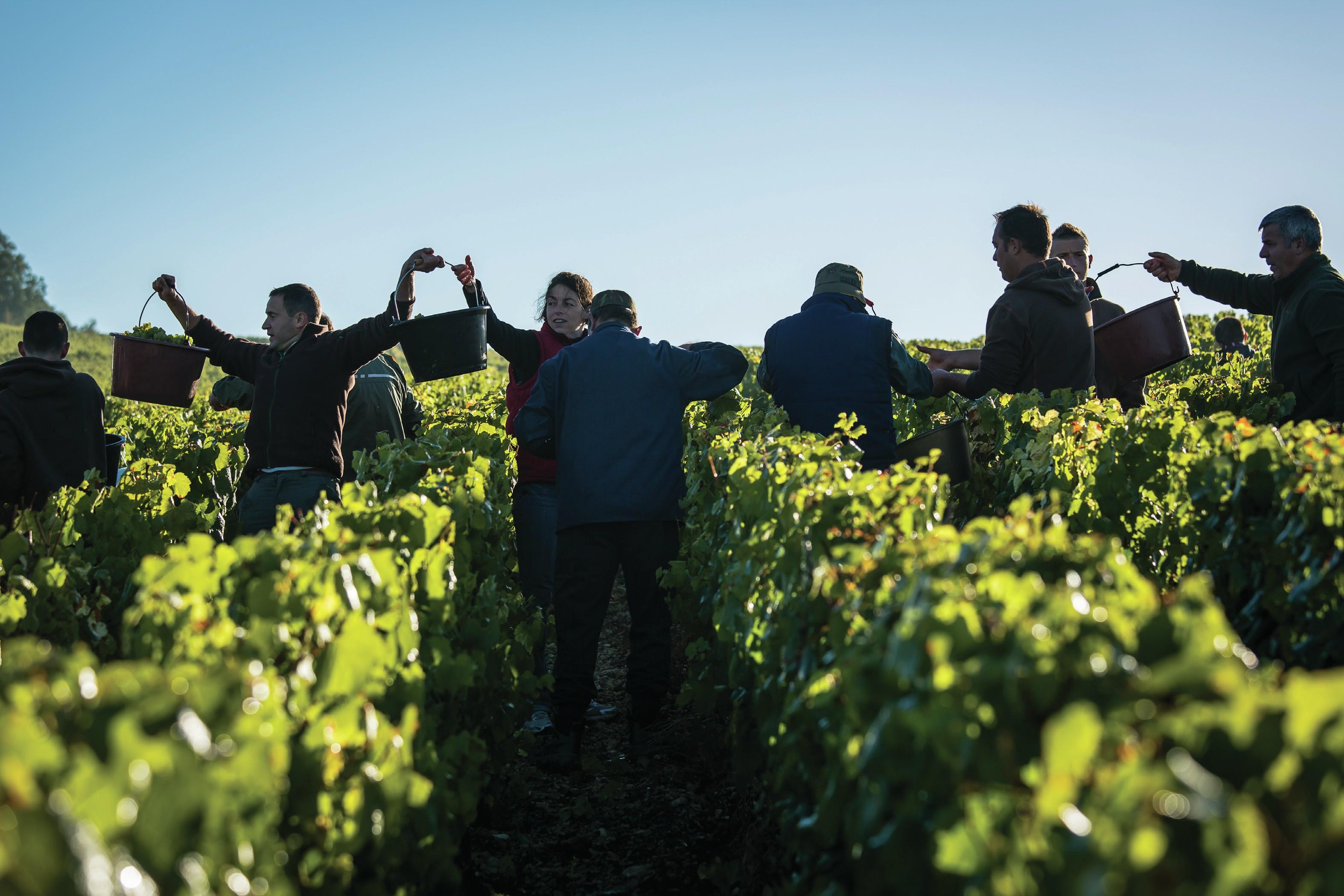Driving force: Buckle up for our French harvest report 2023
The French wine industry has endured a turbulent ride recently, from surplus stock issues to climate-affected harvests. Jessica Mason finds out how it has learned to adapt.

France, like many markets, continues to face the ongoing challenges of world events. It would be fair to say that the French winemaking regions have also dealt with market volatility with a deft amount of composure.
Explaining the headwinds the sector has faced during the last 12 months, Olivier Legrand, directeur général & marketing at Conseil Interprofessionnel des Vins du Languedoc (CIVL), admits that “market volatility has been particularly high”, which can largely be attributed to “the complexity of the commercial situation being exacerbated by the increasing number of weather-related incidents having a lasting impact on the region’s production potential”.
Indeed, to move forwards, French winemakers have needed to stay flexible and focused.
Following the announcement in August that the French Agriculture Ministry would spend €200 million destroying the wine surplus to help producers as consumer demand waned, many queried how the affected regions might come back from such a blow.
According to Denis Guthmuller, president of the Syndicat Général des Vignerons des Côtes du Rhône: “Since the end of 2019, a series of events has shaken the economy of the Côtes du Rhône appellation and the entire industry. The wine sector was already subject to turbulence on the domestic market, particularly concerning red wines, due to a trend towards reduced consumption.”
Just when the cost of living crisis and the economy appeared to be the key challenges to contend with, along came the weather.
As Legrand points out: “Today, the delicate balance between our ability to meet market demand and prices is heavily dependent on our ability to ensure a stable production volume.”
He laments that recent climate-related events (frost in 2021, drought in 2022 and 2023, as well as hail) are “having an increasingly frequent impact on our production potential”. It is for this reason that the CIVL has indicated that the fight against global warming is at the heart of its priorities for the coming years.
SUPPLY AND DEMAND
The knock-on effect of destroying the wine surplus also comes with its own issues: primarily, how it is likely to impact prices. Guthmuller observes that “unfortunately, our sector, like many others, is governed by the law of supply and demand”, and admits that these excess stocks “have a downward impact on prices in bulk markets, often leading to sales at a loss”.
Noticing market fluctuations, Alix Rodarie, head of international development at French fine wine auction house iDealwine, reveals that, of all the French regions “Burgundy has been the most affected by shifts in prices, with these having stagnated or decreased slightly, meaning the price of a first growth Bordeaux is now as affordable or more affordable than a relatively ‘simple’ but rare Bourgogne wine from a cult producer like Leroy, Auvenay, or Bizot”.
Looking for the positives, Rodarie suggests: “All of this means that for wine enthusiasts, there is great value to be had, and for investors, there is great potential for those willing to play the long game.”
Ultimately, most wineries went down the route of distillation for their surplus wine, rather than opt for price reductions. Nobody has wanted to devalue products. After all, as Guthmuller highlights: “It is better to distil rather than sell our products at low, unprofitable prices, which drag the whole collective down. There is a perfect correlation between low stock levels/high prices, and vice versa.”
He explains that, in order to succeed, Côtes du Rhône’s ambition is “to stimulate demand by adapting our products, as well as through communication”, but admits that “reducing our stocks through distillation will allow us to rebalance a degraded situation”..
Brice Eymard, managing director of the Conseil Interprofessionnel des Vins de Provence (CIVP), says: “Certain vineyards that produce large quantities of red wine are particularly affected. The distillation measure will help to rebalance the market. However, it’s a one-off, short-term measure that won’t work every year. Structural decisions need to be taken quickly to recalibrate wine production in France and boost consumption. The rosé wine market is less affected by this imbalance.”

One way of adapting to an unknown future is to dedicate more research and attention to areas such as genetic biodiversity, which wineries across France are doing.
Virginie Valcauda, marketing and communication director at the Bourgogne Wine Board, says that “for some years now, Bourgogne, and therefore Chablis, has been working to ensure its production capacity, while reducing its environmental impact as much as possible”.
She hints that numerous research projects and investments are under way and points out that “around 35 projects are being supported or co-financed by the Bourgogne wine trade association. These include the authorisation of new rootstocks, genotyping the various clones of Burgundy’s flagship grape varieties and trials of more eco-friendly vine management methods in light of rising temperatures and recurring drought”. Underscoring all of this is the aim to “effectively work with whatever Mother Nature decides is about to come next”, says Valcauda.
In the Languedoc, Legrand agrees that “genetic diversity is a major lever for adapting living organisms to changing environmental conditions”, and argues that “it is underexploited in the wine industry”. However, this may soon change.
“This genetic diversity can be generated by plant breeding, which is the project that the CIVL has been working on since 2018 with INRAE-Bouquet varieties, which are tolerant to fungal diseases (mildew and powdery mildew) and derived from our Mediterranean grape varieties, so are adapted to our conditions,” Legrand says.
He believes that diversity means “making the most of what already exists” and so, with this in mind, the interprofessional association, together with the AOP and IGP unions within Languedoc vineyards, is launching a two-year project on this subject, supported by the Agence de l’Eau.
The project, says Legrand, has “a strong focus on making the most of existing genetic diversity, ie clones, rootstocks and grape varieties”. This is one big development that is set to change the future of wine production across French regions.
Guthmuller also suggests that an interesting change happening in vineyards is “the research around ‘VIFA’: grape varieties for adaptation”.
Partner Content
He highlights that “four grape varieties are in an experimental phase, that will last a total of 10 years. These are: Floreal, Carignan Blanc, Rolle and Vidoc”. Winemakers in France are unafraid to move things forward, although they are sticklers for quality.

KEY DEVELOPMENTS
Other key developments during the last 12 months include the French wine sector taking a closer look at water and carbon efficiency. Legrand describes these as “changes in cultivation practices, which can increase water efficiency and storage”, revealing that the CIVL is already “involved in partnerships with specialists in this field, to provide winegrowers with the best possible support”.
He helped organise a conference on this subject in Villeveyrac this year, the Assises Méditerranéennes de la Viticulture, which brought together more than 200 winegrowers. “We talked about grass cover, pruning, organic matter in the soil, and so on,” he explains.
According to Legrand, dealing with the issue of water also means dealing with carbon and its sequestration. Too often, he argues, the two issues are dissociated.
“And yet, without water, there are no plants, no trees and therefore no carbon sequestration. So, for example, dealing with the issue of organic matter in the vineyard to increase the useful water reserve of the soil also means tackling the issue of the carbon footprint of our activity and, above all, helping to limit climate change.”
Eymard explains that CIVP also has a number of initiatives under way concerning the agro-ecological transition, notably on carbon footprint, soil, biodiversity and water management.
Across the French regions, wineries are also making ecologically progressive organic and biodynamic strides.
Valcauda explains that this is partly due to consumer trends, but observes that wine that is certified organic is on the rise and states: “At the same time, the area under environmental labels is growing rapidly,” hinting that there is a genuine shift.
“Organic winegrowing areas in particular are rising sharply across the region: Nearly 6,000 hectares were in conversion or certified at the end of 2021, up 18.6% on 2020 (22% of Bourgogne; 17% in the Yonne, particularly Chablis). We expect the figures for 2022 in the coming weeks. More and more companies are signing up for environmental certification, whether for biodynamic, organic or integrated viticulture (HVE, Terra Vitis, Vignerons engagés).”
All the challenges and changes facing French vignerons are happening in plain sight. As Legrand reiterates, all issues feed into the same rhetoric for an industry that is so impacted by such precarious aspects as the weather and the economy.
He says: “Climatic uncertainties are turning into economic uncertainties. Heat that burns the vines, droughts that make them thirsty, young planters who struggle to set up in these conditions: none of this prevents the production of great wines, but for how long? And at what price? Vines need water to live, and winegrowers need a certain level of production to satisfy consumer demand and ensure the economic equilibrium of their business.”
The situation is, indeed, a volatile one. As Legrand points out: “The issues of water and yields must therefore be at the very heart of tomorrow’s challenges.

The 2023 harvest at a glance
Loire Valley
The year has been heralded as a complicated vintage for the Loire both in terms of quality and variations in success between producers in the same appellation, primarily because, for some producers, the grapes are healthy, but comparatively others are having to contend with rot. According to reports by Les 5 du Vin, when it comes to the latter, hand-picking needed to be extremely selective and producers are having to play the long game.
Bordeaux
Hail and frost affected nearly 10,000ha of vines in the region during the spring, followed by extended periods of drought. According to internal reports from Bibendum, three leading AOPs – Pessac-Léognan, Pomerol and St-Émilion – allowed irrigation for the first time up until 15 August in order to balance the lack of rainfall.
Burgundy
There is a reasonable outlook for both Chardonnay and Pinot Noir, despite reds reported to be affected by lack of water, which in turn has reduced volumes. The Beaujolais harvest is about 30% down due to some isolated hailstorms and a very dry summer reducing yields. This is particularly noted for both Beaujolais and Beaujolais-Villages.
The harvest for Crémant de Bourgogne began at the end of August, while picking for the region’s still wines began in mid-September for the earliest plots, and was expected to gradually accelerate. By the end of September, the whole region was due to have begun harvest.
Rumours are already circulating to suggest that Chardonnays are reaching maturity slightly before Pinot Noir and the volumes expected for both are promising, particularly for Pinot Noir, where the bunches are generous this year. The bright sunshine of the first two weeks of September was also hugely welcomed for bringing about the expected ripeness.
Alsace, Savoie & Jura
According to early reports, the Alsace region’s volumes for this year are expected to be higher than in 2022. However, it has also been reported that powdery mildew has spread in some areas, so losses remain a possibility. In Savoie, despite fungal issues and localised hail damage, a larger harvest than the five-year average is anticipated. There is also a substantial harvest from Jura which is set for healthy and promising grape quantities.
Languedoc-Roussillon
The harvest in the Languedoc was well under way at the time of writing, but picking was still in progress in many terroirs de rouge, according to Olivier Legrand, directeur général & marketing at Conseil Interprofessionnel des Vins du Languedoc (CIVL). He says: “We are well and truly at a crossroads, which we already sensed last year for the 2022 vintage. This year has confirmed it and we are entering an era of uncertainty.”
Legrand adds: “A historically dry winter and spring, an exceptionally intense heatwave at the end of August, and torrential rain from the Pyrénées-Orientales to Lozère right in the middle of the grape harvest, means that the cards are constantly being reshuffled.”
Rhône Valley
Bibendum outlined in its harvest report for 2023 that in the Rhône Valley, particularly towards the south of the region, there was a general lack of water. But, on the positive side, there were very good sanitary conditions for the vines. According to early reports, there will be some pressure on volumes of white wines due to a lack of juice in the berries. However, overall yields are anticipated to sit a little above the five year average for the region, although they still look to be around 10% down for Châteauneuf-du-Pape, largely because of periods of drought.
Provence
A reasonable outlook is suggested by early reports from the Provence region, where the harvest is set to be in line with its five-year average. However, the picture was still evolving at the time of writing, and drought pressures across the region, as well as thunderstorms during harvest time, have been cited by winemakers to have caused some additional challenges for pickers.
Related news
Strong peak trading to boost Naked Wines' year profitability




